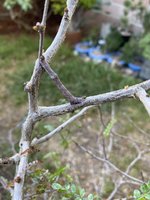Don't know what this tree is at first glance. More photos? Think about botanical plates. A nice close up of a leaf and twig. A close up of the bark. A view of whole tree/bush to get gestalt of growth habit. Close up of flowers if possible. The abcision scar where a leaf falls off, the pattern of vascular bundle scars in the abcision scar is diagnostic in some cases. So a good photo of a leaf scar helps. Also a photo of buds on twigs. The pattern of scales over the bud is diagnostic in some genera. The genus Opercularya has compound leaves, not sure your tree is showing compound leaves. It may take several seasons to get good enough photos to do a proper identification. I have had an orchid or two take a decade or more before identification became












